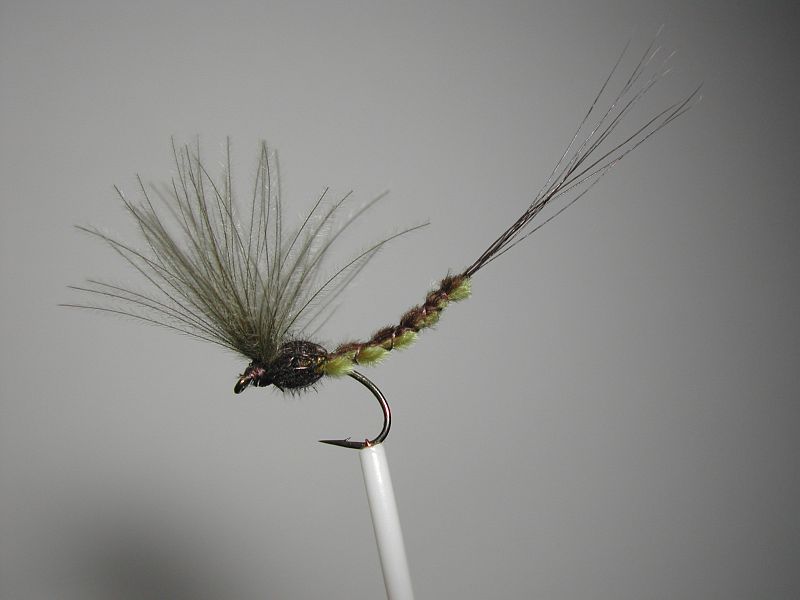AN EXTENDED BODY EMERGER

An extended body dry fly
Article and pictures by Agostino Roncallo

An extended body nymph
A few years ago, a friend sent me several bags of Oiler Puff feathers to try.
(These are great feathers for emergers and dry flies. They are short feathers and lack discernible stems. They are sometimes called nipple plumes because on a live bird, they are located on the nipple of the preen gland. Tied in as wing posts, they trap a lot of air at the base of the feather. See http://www.californiaflyshop.com/cdc-oiler-puff-feathers/)
Wondering what I could do with the material, I thought of trying to use it to build extended body dry flies that I would dress with silicone.
I tied several imitations that floated well enough to capture fish; then the effect of silicone wore off and I had to wash and dry the fly and it was problematic.
The alternative to this was to have a larger number of imitations and replace them after each fish I caught.
Nevertheless, I liked the bodies that I built with puff feathers of two different colors – a darker to mimic the upper part of the abdomen and the other more clear to imitate the lower part – I resolved to use the pattern as an emerger as well. Puff is well suited for the bodies of the emerging nymphs because, by absorbing water, the fly slowly sinks.

Dressing
Fix a puff feather on the curve of a grub hook, so that the tip is facing downward.

At the same time, above the puff, tie in hard tails, either feather barbs of large birds (like pheasant, goose, etc.)

Above these tie in another puff of the same size as the previous one.
Stretch the puff and the tails to the left and wrap light wire in wide coils around the materials.

When you reach the end of the extended body stop, wrap a loop at that point and return to the hook with coils of the same width as those previously wrapped.

Tie in a bunch of fur fibres with the points facing left. (The wing case of nymphs can be constructed using hair such as the opossum or the legs of the arctic hare.)

Add seal’s fur dubbing to the thread and wrap a thorax.


Pull ehe fur hair fibres foward and tie off at the head of the fly

Tie in gray partridge legs and pull the fur fibres over the thorax to create the wing case of the nymph.

Tie off the feather and any fur fibres at the eye and trim off any that exceed the length of the extended body.
To obtain small imitations you can use a single puff with satisfactory results.





